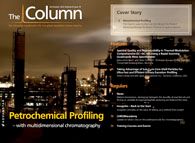Holistics evidence
Essential oil inhalation is a holistic and economic treatment for the alleviation of anxiety. Whether this effect is of a psychological or physiological basis has been in dispute since the beginnings of ‘modern’ medicine. Many would argue that any effects felt are simply psychological, a ‘placebo’ effect, as if the individual believes the treatment will aid them it does.
Essential oil inhalation is a holistic and economic treatment for the alleviation of anxiety. Whether thiseffect is of a psychological or physiological basis has been in dispute since the beginnings of ‘modern’medicine. Many would argue that any effects felt are simply psychological, a ‘placebo’ effect, as if theindividual believes the treatment will aid them it does.
Essential oils are volatile liquids composed mainly of terpenes, derived from aromatic plant material bysteam distillation or mechanical expression1. Commonly used in medicine up until the 20th century, post-20th century they became confined to usage as preservatives and flavour enhancers.However, a group of researchers in China2 has identified evidence that there may indeed be aphysiological effect from the inhalation of essential oils. The scientists identified a global change inthe metabolic profile of rats exposed to a prepared mixture of Lavandula angustifolia (lavender), Salviasclarea (clary sage), Santalum album(sandlewood) and Citrus sinensis (orange fruit). The treated rats wereexposed for a period of ten days to the aroma and then the behavioural effects tested by the elevatedplus maze (EPM) test. The EPM test is well-documented in the testing of drugs designed for the treatmentof stress-related disorders.
The metabolite profile of the rats was measured by analysing the global levels of compounds withinbrain tissue and urine samples, comparing the metabolic profiles of treated and untreated rats. Gaschromatography coupled to time–of–flight mass spectroscopy (GC–TOF-MS) was used to identifycompound levels differentially expressed following exposure to the prepared aromas.The rats exposed to the aroma experienced weight gain and experienced a greater level of calmcompared with control rats when tested. It was found that there were 50 metabolites differentiallyexpressed in the brain tissue compared with 17 metabolites in the urine samples. There were alsolower levels of neurotransmitter and carbohydrates within the braintissue following aroma exposure compared to controls. Thisindicated a change in the levels of metabolites in the brain, coconcurrentwith an increased level of calm.It is hoped that in the future, that this research will highlight newtargets for the development of drugs aimed at the treatment ofanxiety‑related disorders and that the mechanistic understanding maybe further elucidated. However, further study is required tovalidate the findings in humans.
1. National Cancer Institute (USA), (www.cancer.gov).
2. Guoxian Xie et al, PLOS ONE, 7(9), (2012).
This story originally appeared in The Column. Click here to view that issue.

Evaluating the Accuracy of Mass Spectrometry Spectral Databases
May 12th 2025Mass spectrometry (MS) can be effective in identifying unknown compounds, though this can be complicated if spectra is outside of known databases. Researchers aimed to test MS databases using electron–ionization (EI)–MS.

.png&w=3840&q=75)

.png&w=3840&q=75)



.png&w=3840&q=75)



.png&w=3840&q=75)








